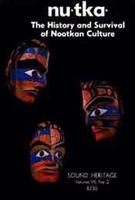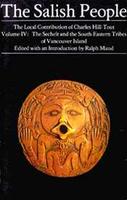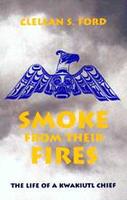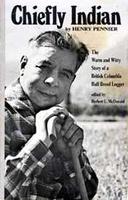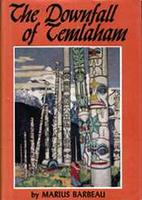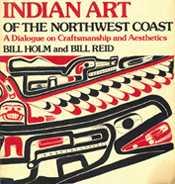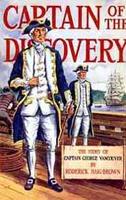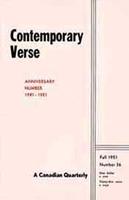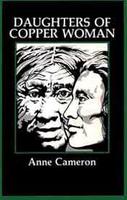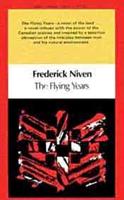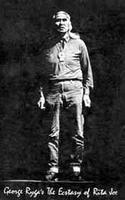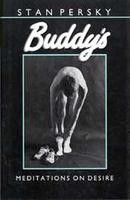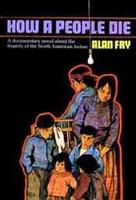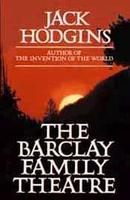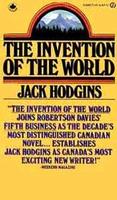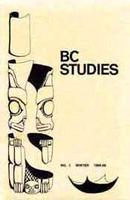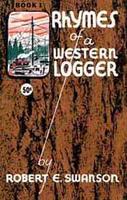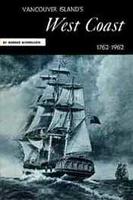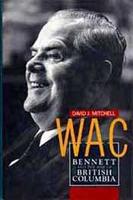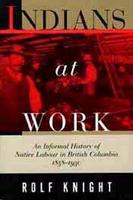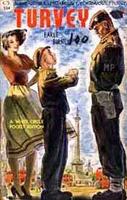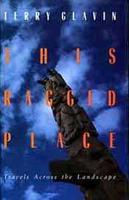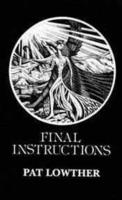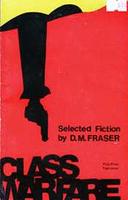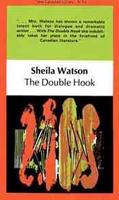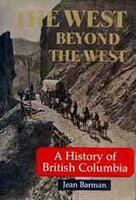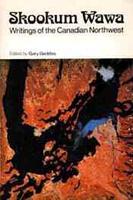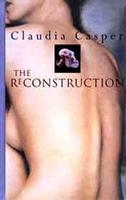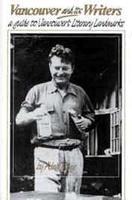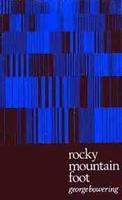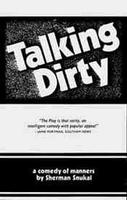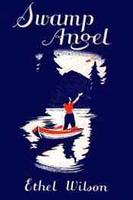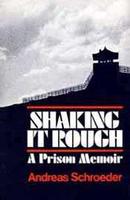Literature of BC
LITERATURE has a long history in BC. The province traditionally leads the nation in per capita book purchases and LIBRARY use, and has the strongest market for regional books in English-speaking Canada. It is not unusual for favourite local titles such as The Curve of Time, Raincoast Chronicles First Five or Never Fly over an Eagle's Nest to sell in excess of 50,000 copies—enough to be ranked as national best-sellers in many larger countries.
Aboriginal Literature
The first BC literature, that of the aboriginal peoples, has been largely lost but enough fragments survive to indicate a highly developed oral tradition with a great variety of forms. Some work was sacred or ritualistic and some was secular and functional. Poetry, song, drama and prose were all present. Creativity was protected and encouraged by a highly developed concept of intellectual property. Among the sacred texts, some works gave explanations of the origins of various family rights and told of the encounters of ancestors with power-giving supernatural beings; these were recited within the family to pass on the historical knowledge to new generations, or used in public to validate claims to certain privileges. Another class of sacred texts was the songs and chants used by shamans for curing the ill and casting spells, or by individuals to summon personal powers. Such sacred works were considered to be some of the owner's most valuable private property. Secular works were often considered common property, being used for general entertainment and instruction. Some of these were lengthy origin myths rivalling Norse sagas in their complexity, while others were short, humorous tales improvised to entertain children. They often featured the trickster figures raven and mink on the West Coast, and coyote in the Interior. Certain legends like the story of the salmon boy, copper woman, the snot boy, the wild woman of the woods and the thresher myth were widely distributed but modified with local details by individual groups.
The most methodical and prodigious collector of aboriginal literature was the German-American anthropologist Franz BOAS, whose main compilations include The Mythology of the Bella Coola Indians (1898), Kwakiutl Texts (1905–6), Tsimshian Mythology (1916) and Kutenai Tales (1918). Boas extended his work by training local ethnographers to carry on in his absence, resulting in Mythology of the Thompson Indians (1898) and Traditions of the Thompson Indians (1912) by James TEIT and Ethnology of the Kwakiutl (1921) with the KWAKWAKA'WAKW collector George HUNT. Hunt was the first aboriginal author to publish his own traditional literature in written form, although he worked under Boas's close supervision. Among the TSIMSHIAN Henry Wellington Tate performed a similar role for Boas, collecting most of the material in his Tsimshian Mythology. Some of Tate's work was republished in 1993 as The Porcupine Hunter and Other Stories: The Original Tsimshian Texts of Henry Tate (ed Ralph Maud). William BEYNON (1888–1958), a native Tsimshian, collected literary artifacts for the Canadian government under the direction of the ethnographer Marius BARBEAU and wrote an unpublished history, Ethnical and Geographical Study of the Tsimsiyaen Nation. Other early texts of importance are Haida Texts and Myths by John Swanton (1905) and Charles HILL-TOUT's monographs on the SQUAMISH (1897), Thompson (1899), Lillooet (1905), HALKOMELEM (1902) and SECHELT (1904). Later ethnographies that contain some transcribed aboriginal literature are The Bella Coola Indians (1948) by Thomas F. McILWRAITH and Tsimshian Myths (1961) and Totem Poles (1950) by Marius Barbeau.
As more aboriginal people became fluent in English, popular "as-told-to" accounts of traditional literature became more common, though the total remains disappointingly small. Legends of Vancouver (1911) is a sentimentalized but enduringly popular rendering of a group of origin myths given to the celebrated METIS poet Pauline JOHNSON by Chief Joe CAPILANO (1840–1910). Men of Medeek is a tribal history of the Kitselas band by Chief Walter Wright rendered with some of the art of the aboriginal teller by Will Robinson (1935); and Conversations with Khahtsahlanough (1955) by August Jack KHAHTSAHLANO (1876–1967) and J.S. MATTHEWS, is a collection of legends and accounts by Khahtsahlano, a Squamish elder. Transcribed collections of traditional stories by later informants include Lillooet Stories (1977) by Dorothy Kennedy and Randy Bouchard and Write it on your Heart: The Epic World of an Okanagan Storyteller (1988) by Harry ROBINSON and Wendy Wickwire. In a class by themselves are traditional works written directly in English by aboriginal writers, the most outstanding being George CLUTESI, the NUU-CHAH-NULTH (Nootka) author of Son of Raven, Son of Deer (1967) and Fables of the Tse-Shaht (1994). Clutesi, an artist and actor as well as author, also wrote Potlatch (1969), a view of Nuu-chah-nulth ceremonial life, and Stand Tall My Son (1990), a statement of his philosophy.
Many other storytellers departed from the traditional to offer their own views and tell their own life histories, both with the aid of ghost writers and on their own. One of the earliest and also one of the most entertaining is Smoke From Their Fires (1968), a memoir of Charles James Nowell (b 1870), a Kwakwaka'wakw elder, as told to Clellan Ford. Of similar vintage is "The Faith of a Coast Salish Indian" (1955), a biographical study of KATZIE shaman Xa'xc'elten (b 1855) by the anthropologist Diamond Jenness. Later autobiographical works include Guests Never Leave Hungry (1972) by James SEWID with James Spradley (1972); The Days of Augusta (1973) by the SECWEPEMC (Shuswap) elder Mary Augusta Tappage with Jean Speare; During My Time: Florence Edenshaw Davidson, A Haida Woman (1982) by DAVIDSON as told to Margaret Blackman; Assu of Cape Mudge (1989) by the Lekwiltok elder Harry ASSU with Joy Inglis; and Bella Coola Man (1994) by the NUXALK elder Clayton MACK with Harvey Thommassen. Among the most popular of all books featuring aboriginal personalities was the oratorical My Heart Soars, by the celebrated Squamish actor Chief Dan GEORGE and his speechwriter, Father Herbert Dunlop.
From the 1970s onward a new generation of aboriginal BC writers began to publish novels and poetry that drew on the traditions of English literature to render contemporary Native experience. These writers include Lee MARACLE, Skyros Bruce, Jeannette ARMSTRONG and Richard Van Camp. Traditional literature has had a strong influence on such non-aboriginal writers as Howard O'HAGAN, Christie HARRIS, Catherine Anthony CLARK, Robert BRINGHURST and others. A Guide to Indian Myth and Legend by Ralph Maud provides a useful overview of the Northwest Coast tradition and in A Story Sharp as a Knife (1999) Robert Bringhurst argues that its greatest achievements deserve to be ranked among the classics of oral literature.
Euro-Canadian Literature
The earliest Euro-Canadian writers in BC were the first European explorers, most of whom considered it an important part of their duties to keep detailed diaries for later publication as books. The journals of James COOK, George VANCOUVER, Alexander MACKENZIE, Simon FRASER and David THOMPSON in particular stand out as some of the best exploration literature and did much to form the world's mental image of the region, a role they continue to serve in modern editions. The FUR TRADE era produced a considerable literature owing to the British appetite for books about remote corners of Empire and to the formidable diary-keeping habits of 19th-century traders like Alexander Caulfield ANDERSON, Daniel HARMON, Dr John McLOUGHLIN, Peter Skene OGDEN and John WORK.
The first opportunity for BC residents to read and write about themselves was provided by early NEWSPAPERS. The British Colonist was founded in VICTORIA on 11 Dec 1858 by Amor DE COSMOS, while John ROBSON founded the NEW WESTMINSTER British Columbian on 13 Feb 1861. Voters were sufficiently appreciative of this enhancement to colonial life that both de Cosmos and Robson were later elected premier. Settlers' hard struggle for survival left little time for writing, and 19th-century pioneer literature was limited mostly to diaries and letters, with the occasional memoir such as "Recollections of a Pioneer of the Sixties" by Susan ALLISON (reprinted as A Pioneer Gentlewoman in BC, 1976). Alfred WADDINGTON, the tireless pioneer entrepreneur, found time to write a book chiefly notable for being the first one actually published within the province, Fraser Mines Vindicated, Or the History of Four Months (1858). Gilbert Malcolm SPROAT, another gentleman entrepreneur, wrote several books reflecting his energetic travels and broad interests, including Scenes and Studies of Savage Life (1868). Missionaries were particularly diligent writers, the most outstanding being the OBLATE Father A.G. MORICE (1859–1938) whose History of the Northern Interior of British Columbia (1904), History of the Catholic Church in Western Canada (1904) and The Carrier Language (1932) remain important works in their fields. Father J.M. Le Jeune earned special distinction by publishing a newspaper in CHINOOK JARGON, the KAMLOOPS WAWA, from 1891 to 1917.
British Columbia, 1792–1887, published in 1887 by Hubert Howe BANCROFT, served notice that the brevity of BC history would not prevent its becoming the most popular subject of local readers. Bancroft's work was followed by a long series of histories including those by Father Morice, and Capt John T. WALBRAN's British Columbia Place Names 1592–1906 (1909), still serving as the province's de facto maritime history. Alexander Begg's 3-volume History ofthe North-west appeared in 1894, only to be superseded by the 4-volume British Columbia from the Earliest Times to the Present (1914) by Judge F.W. HOWAY and E.O.S. Scholefield, the standard reference until British Columbia: A History (1958) by Margaret ORMSBY and The West Beyond the West (1991) by Jean Barman. BC's passion for history has also been reflected in a long series of journals, including The British Columbia Historical Quarterly (1937–58), Sound Heritage, Canada West, RAINCOAST CHRONICLES, BC Historical News and BC STUDIES.
Although BC was not known for poetry until the emergence of the "West Coast scene" in the 1960s, a literary MAGAZINE, Westminster Hall, was being published as early as 1911, and when Pauline Johnson died in 1913, thousands of people lined the streets of VANCOUVER to honour her. Isabel Ecclestone MACKAY (1875–1928) tried to follow in Johnson's footsteps, giving dramatic readings to full houses at the Pender Auditorium and publishing 4 books of verse between 1904 and 1930. Tom MacInnes (1867–1951), son of BC Lt Gov Thomas McINNES (their names were spelled differently), published the first of his 8 books of highly mannered verse, A Romance of the Lost, in 1908, and went on to achieve the kind of mass popularity today's poets can only dream of. Audrey Alexandra BROWN, the first important BC poet born in BC, began a distinguished career with publication of A Dryad in Nanaimo in 1931 and Floris McLaren introduced a more modern note with Frozen Fire in 1937, followed by Anne MARRIOTT's Calling Adventurers (1941), which earned BC its first GOV GEN'S LITERARY AWARD for poetry. Robert SWANSON's chapbooks of spirited LOGGING ballads sold an estimated 80,000 copies during the 1940s and 1950s, exclusively along the BC coast.
Early Novelists
The first BC novels appeared around the turn of the 19th century and in 1906 Martin Allerdale GRAINGER published one that came to be recognized as a BC classic, Woodsmen of the West. Grainger also anticipated the experience of later novelists by seeking more remunerative work and published no further books during his lifetime. Hubert EVANS (1891–1976), having earned only $400 from The New Front Line, his sturdy 1927 novel about a WWI veteran returning to do battle with the BC wilderness, turned to other forms and didn't write another novel about BC for 27 years. Howard O'Hagan's fanciful reworking of the Yellowhead legend, Tay John, became a critical sensation when reprinted in 1974, but was so unsuccessful in its original British publication (1939) that O'Hagan didn't publish another novel for 44 years.
Evans learned he could make his stories saleable by replacing BC place names with US ones, though he reverted to authentic names in Mist on the River (1954), a superb novel of Native–white cultural conflict on the SKEENA R. Frederick NIVEN (1878–1944) began writing about Canada for Scottish newspapers and published some 30 novels about Scotland and Scottish-Canadians. Bertrand W. SINCLAIR (1881–1976) first moved from Ontario to Montana, where he established a US following writing COWBOY stories, then moved to BC and continued to mix popular novels of the wild west with novels like Poor Man's Rock (1920) and The Inverted Pyramid (1924), written in the same pulp magazine style about BC fishers, loggers and settlers. His US publishers were unenthusiastic about his BC material and in 1936 Sinclair gave up writing to become a SALMON troller. Two novels of international reputation were linked with BC during the 1940s: Under the Volcano (1947) by the visiting English writer Malcolm LOWRY and By Grand Central Station I Sat Down and Wept, written during a 1941 stopover in PENDER HARBOUR by the Ottawa writer Elizabeth Smart. Under the Volcano was not written on BC soil, only revised, and neither book owed or offered much to BC experience, but both have been lionized by local scholars eager to sieze upon links to the world stage.
Some writers refused to angle their BC focus to suit foreign taste, and generally time has been kinder to them. Chief among these was Roderick HAIG-BROWN (1908–76), who came to BC from England when he was 19 years old and published his first book, Silver, in 1931. Over the next 4 decades he went on to publish 25 books on cougars, salmon, whales, homesteading, angling, commercial FISHING, trapping, logging and Capt George Vancouver, pioneering almost every major theme in BC literature—especially environmentalism. His lifelong effort to forge environmental awareness was crucial in making BC one of the world's breeding grounds of environmental activism (see ENVIRONMENTAL MOVEMENT). Haig-Brown's 2 adult novels, Timber (1942) and On the Highest Hill (1955), are unsatisfying artistically but the brilliance of his essay style in books like Measure of the Year and the breadth of his overall achievement make him the major BC writer up to the mid-century and arguably longer. If he had a shortcoming it may be that, much as he tried to achieve the voice of a native British Columbian, he never completely stopped sounding like a man whose sensibilities were formed at a good English public school. This is not as true of the BC-born Emily CARR (1871–1945), even though she came out of Victoria's faux-English enclave and studied in Paris and London. Klee Wyck (1941), her Gov Gen's award-winning collection of vignettes about travelling around BC, has a relaxed humour that marks it as the work of a writer perfectly at home in her world. The Book of Small (1942), The House of All Sorts (1944) and her autobiography Growing Pains (1946)—all written when she was in her 70s—confirm her status as an important BC writer. The novels of Ethel WILSON (1888–1980) derive from an urban middle-class world circumscribed by its characters' inner preoccupations in a way that subdues locale, though West Coast nature flavours them all. Having previously written only occasional short stories, Wilson had a remarkable burst of creativity upon reaching late middle age, producing 5 major novels between the ages of 59 and 68; among these, Swamp Angel (1954) is generally considered the best. Her plots are quiet and her characterizations etched in low relief, but her writing has an assured elegance that makes it one of the fine achievements of BC fiction. At the opposite end of the stylistic spectrum, The Double Hook (1959) by Sheila WATSON, raised in New Westminster, explores the life of a rustic CARIBOO town in fragmentary, jarring images interspersed with mythic invocations that echo the modernist experiments of Joyce and Faulkner.
Both Hubert Evans and Roderick Haig-Brown wrote successful books for children set in BC during the 1930s and 1940s, opening the way for such writers as Catherine Anthony CLARK, whose fantasy classic the Golden Pine Cone (1950) paralleled the many works of Christie Harris in its imaginative use of aboriginal myth. In The Republic of Childhood (1964), the librarian and critic Sheila EGOFF helped to define the role of children's literature both in BC and across Canada.
Journalists
Most British Columbians, asked to name a BC writer they admired at any time up to the 1970s, would not have named a poet or novelist but a leading journalist like Margaret "Ma" MURRAY, Bruce HUTCHISON, Pierre BERTON, Jack WEBSTER, Paul ST PIERRE, Eric NICOL, Barry BROADFOOT or Allan FOTHERINGHAM. Far more than mere reporters, such writers helped define BC's place in the nation, while others like Nancy HODGES, Helena GUTTERIDGE, Jack SCOTT, Bob HUNTER, and more recently Terry GLAVIN, Ben Parfitt, and Stephen Hume, helped establish concepts like universal suffrage, the welfare state and environmentalism to their central place in BC culture. Starting in the 1940s under the influence of Ira DILWORTH, CBC radio also began to provide an important forum for BC writing, with such producers as Robert HARLOW, Phyllis WEBB and Don Mowat playing key roles in airing poetry, drama and prose. In the 1960s CBC television also began to play a role in developing BC subject matter with CARIBOO COUNTRY, produced by Philip Keatley, and the long-running adventure series the BEACH COMBERS, which did much to establish BC as a leading centre for film and new media production (see also FILMMAKING INDUSTRY).
Modern Poets
The appearance of the new poetry magazine CONTEMPORARY VERSE in 1941 helped to coalesce a group of BC poets led by Earle BIRNEY (1904–95), winner of the Gov Gen's Literary Award for David and Other Poems in 1942 and Dorothy LIVESAY, Gov Gen's Award winner for Day and Night in 1944. Birney expressed a stronger sense of the West Coast in works like "David," "The Condemnation of Vancouver" and "November Walk Near False Creek Mouth," and nurtured a circle of younger writers like Marya Fiamengo as head of Canada's first creative writing school at UBC. His genteel mentorship was interrupted in the late 1950s by another UBC English professor, Warren TALLMAN, who encouraged exchanges between young BC writers and avant-garde American poets, including members of the San Francisco renaissance and the Black Mountain group. This cross-fertilization produced a rich flowering of new talent, including George BOWERING, Frank Davey, Fred WAH, Daphne MARLATT, David Dawson, David Bromige, Jamie Reid, George Stanley, Lionel KEARNS and Barry McKINNON, as well as prose writers Gladys Hindmarch and Stan PERSKY, whose modernist American flavouring turned West Coast poetry sharply away from the humanist and nationalist tradition coming down through Birney and Livesay.
Loosely identified as the "TISH group" after a magazine founded by Davey and Bowering, it collided noisily in the late 1960s with a faction marshalled by another assertive American teaching at UBC, J. Michael YATES, resulting in the so-called "poetry wars." Yates led a contingent of "West Coast surrealists" of which he was himself the most energetic practitioner, but which also involved such writers as Andreas SCHROEDER, Michael Bullock, Charles LILLARD, John Skapski, George McWHIRTER, Michael Finlay, George Amabile, Stanley Cooperman, Derk Wynand and the novelist George Payerle. In addition to these divisions, the disputatious BC writing scene of the 1960s and 1970s harboured a number of poets including Patrick LANE, Red Lane, Tom WAYMAN, Pat LOWTHER, John Pass, Ken Belford, Peter TROWER, David (then known as Dale) Zieroth, and John Newlove, who generally followed the humanist and nationalist lead of Birney and Livesay, bolstered by the later arrival of Milton ACORN and Al PURDY. Adding their unique spice to the "West Coast scene" were the idiosyncratic figures of bill BISSETT, Seymour Mayne and Joe ROSENBLATT. During the 1970s and 1980s on VANCOUVER ISLAND the Malahat Review, edited by the expatriate British poet and UNIV OF VICTORIA professor Robin SKELTON, served as the focal point for a distinct community that at various times included Derk Wynand, Doug Beardsley, Charles Lillard, Susan MUSGRAVE, Marilyn BOWERING, Sharon THESEN, David Day, Stephen SCOBIE, Theresa Kishkan, Patricia YOUNG and Linda Rogers. In NELSON, Tom Wayman, Colin Browne, Jeff Derksen, Gary Whitehead, Calvin Wharton and others started the KOOTENAY SCHOOL OF WRITING; later they relocated it to Vancouver, where it became associated with the l=a=n=g=u=a=g=e poetry movement. The ferment that made BC Canada's poetry hot spot in the 1970s gradually died down but enjoyed a resurgence in the 1990s with the appearance of a new generation of writers like Mark Cochrane, Tim Bowling, Evelyn LAU, Thea Bowering, Kevin Paul and Shannon Stewart.
New Generation of Novelists
A new generation of BC-born fiction writers began publishing in the 1960s and 1970s, among them Robert Harlow, Joy KOGAWA, George Bowering, Alan FRY, Anne CAMERON and Jack HODGINS. Harlow produced a series of dense, intellectual novels brooding on his PRINCE GEORGE roots, while Kogawa fashioned her heart-rending evocation of the JAPANESE RELOCATION, Obasan. Bowering pursued an experimental course, mixing myth, history and post-modernism in the Gov Gen's Award-winning Burning Water, while Fry continued the BC preoccupation with aboriginal issues in his controversial docu-novel How a People Die (1970). But it was in the work of Hodgins that the flame of BC identity burned most brightly. Beginning with Spit Delaney's Island (1976) and continuing through Invention of the World (1977) to Broken Ground (1998), no novelist has pursued the grail of BC character as self-consciously as Hodgins. Anne Cameron's work taps the same Vancouver Island material, but with her the evocation of regional character takes second place to her rage for feminist social criticism, which runs undiminished through more than 30 published books, from The Dreamspeaker (1978) to Aftermath (1999). Children's writing recovered its momentum during the 1980s in the hands of such writers as Sue Anne ALDERSON, Diane Swanson, Betty Waterton, Kit PEARSON, Mary Razzell and Sarah Ellis. Writing for the THEATRE, on the other hand, had fewer successes, mainly in the work of George RYGA, John MacLachlan GRAY, Morris PANYCH, Dennis FOON and Margaret HOLLINGSWORTH. Beginning in the 1980s, BC writing belatedly began to shed its all-white coloration, with works reflecting its Pacific Rim heritage from Kogawa, Roy MIKI, Wayson CHOY, Sky Lee, Larissa Lai and Jim Wong-Chu. Modern aboriginal writing also began to appear in the work of George Clutesi, Jeannette Armstrong and Lee Maracle. All worked in their own way at solving the riddle of BC experience, and their books are British Columbian in the sense that no reader could mistake them as being from anywhere else.
The emergence of truly indigenous voices could hardly be said to have dominated the scene, as BC continued to serve as a literary crossroads. It provided a home not just to writers from other parts of Canada like Ryga, W.D. VALGARDSON, W.P. KINSELLA and D.M. FRASER, but also to many expatriate writers like Jane RULE (US), Audrey THOMAS (US), William GIBSON (US), Keith MAILLARD (US), David WATMOUGH (UK), Kevin Roberts (Australia), Bill Schermbrucker (Kenya), Jan DRABEK (Czech Republic), and later, Anita Rau Badami (India) and Goh Poh Seng (Singapore). Some, like Rule, Thomas and Roberts, followed Malcolm Lowry's example by gradually merging their former identities into the new to develop a hybrid voice; others such as Gibson, Watmough and Drabek found BC a congenial retreat from which to continue engaging their former cultures. In the 1990s the roster of fiction writers was augmented by a wave of new names like Douglas COUPLAND, Linda Svendsen, Marilyn Bowering, Gail ANDERSON-DARGATZ, Carol Windley, Michael TURNER, Shani Mootoo, Zsuzsi Gartner, and Anne Fleming, while a strong cadre of new First Nations writers like Eden ROBINSON, Gregory Scofield and Richard Van Camp built on the work of Clutesi, Armstrong and Maracle.
The upsurge of Canadian nationalism and the arrival of indigenous BOOK PUBLISHING in the 1960s had a particularly liberating affect on writers of non-fiction books about BC history, places and issues, who were finally freed from having to submit to out-of-province editors who judged manuscripts not according to their interest in BC, but according to their interest in Toronto and London. The result was an increase in BC-authored books from a mere handful to 500 a year by the end of the 20th century. The author who best exemplified this era was George WOODCOCK, a scholar, critic and all-purpose man of letters whose prodigious output of more than 150 books on every imaginable topic from the Third Century BC to the future of electronic communication, mirrored the rise of the non-fiction book in BC. A partial list of his fellow authors attests to the remarkable strength of the genre: Helen and Philip Akrigg, M. Wylie BLANCHET, Lynne Bowen, Ken Coates, David Cruise, Wade DAVIS, Gilean DOUGLAS, Ken Drushka, Wilson DUFF, Brian FAWCETT, Robin Fisher, Daniel Francis, Alison Griffiths, Alan Haig-Brown, Lynn Hancock, Herschel HARDIN, Cole Harris, Tom Henry, Raymond HULL, Stephen Hume, Adolf HUNGRY WOLF, Edith IGLAUER, Vickie Jensen, Michael Kluckner, Rolf Knight, W. Kaye LAMB, C.P. LYONS, Susan Mayse, Bridget MORAN, Rosemary Neering, Peter C. NEWMAN, Margaret Ormsby, Stephen Osborne, T.W. Paterson, R.M. Patterson, Stan Persky, Bill Richardson, Andreas Schroeder, Martin Segger, Doris SHADBOLT, Hilary STEWART, David SUZUKI, Robert TURNER, Alan TWIGG and Paul Yee. The vast majority of the books produced are on BC subjects, anchoring the province's claim to having one of the most supportive environments for regional writing in the English-speaking world.
by Howard White

